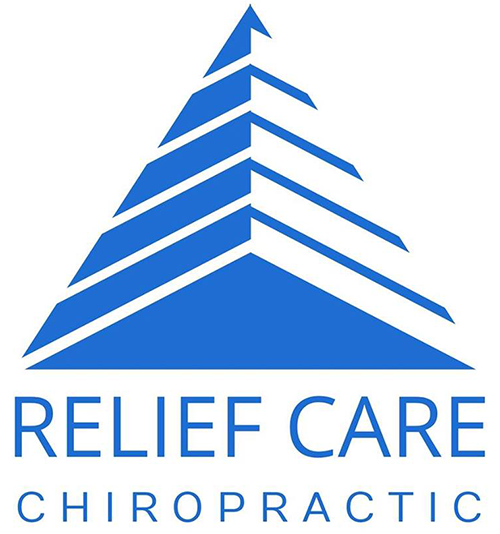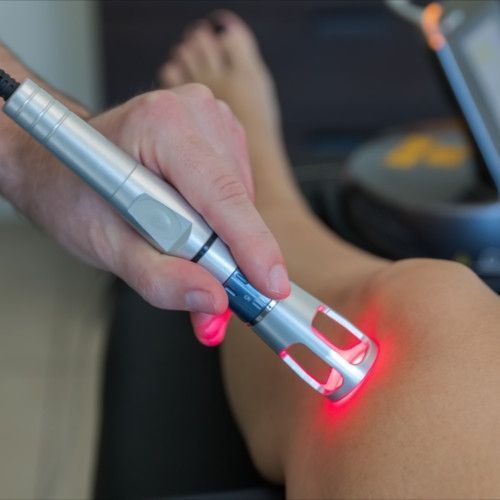Chiropractic Sports Rehab & Physical Therapy Journal Blog

Sciatica, a common condition characterized by pain radiating along the sciatic nerve, can significantly impact one’s quality of life. From discomfort during simple tasks to severe pain that limits mobility, individuals suffering from sciatica seek effective solutions for relief. Chiropractic care emerges as a promising avenue for managing sciatica symptoms and restoring overall health and well-being.
Understanding Sciatica
Sciatica originates from compression or irritation of the sciatic nerve, typically caused by a herniated disc, bone spur, or spinal stenosis. This condition manifests as sharp, shooting pain that travels from the lower back down the leg, often accompanied by tingling or numbness. The discomfort can intensify with movements such as sitting, standing, or walking, making daily activities challenging.
How Chiropractic Care Helps with Sciatica
Chiropractic care focuses on restoring proper alignment and function of the spine to alleviate nerve pressure and facilitate healing. Through gentle adjustments, chiropractors realign the vertebrae, relieving pressure on the sciatic nerve and reducing inflammation. Additionally, techniques such as spinal decompression therapy and soft tissue therapy target specific areas of discomfort, promoting relaxation and pain relief.
Benefits of Chiropractic Treatment for Sciatica
The benefits of chiropractic treatment for sciatica extend beyond pain relief. By addressing the root cause of the condition, chiropractors help improve mobility and flexibility, allowing individuals to resume their daily activities with ease. Unlike medications that offer temporary relief, chiropractic care provides long-term management of sciatica symptoms, minimizing the need for pharmaceutical interventions.
In addition to physical benefits, chiropractic care enhances overall well-being by promoting proper posture and spinal health. Patients often report reduced stress levels and improved sleep quality following chiropractic sessions, contributing to their overall health and vitality.
The Role of Exercise and Lifestyle Changes
In conjunction with chiropractic care, incorporating targeted exercises and lifestyle modifications can further accelerate the healing process and prevent future flare-ups. Stretching exercises aimed at improving flexibility and strengthening the core muscles can alleviate pressure on the sciatic nerve and promote proper spinal alignment. Ergonomic adjustments, such as using lumbar support cushions and maintaining good posture, can also alleviate discomfort during daily activities.
Dietary changes, including anti-inflammatory foods and adequate hydration, support the body’s natural healing mechanisms and reduce inflammation associated with sciatica. By adopting a holistic approach to wellness, individuals can maximize the benefits of chiropractic care and experience lasting relief from sciatica symptoms.
Finding the Right Chiropractor
When seeking chiropractic care for sciatica relief, it’s essential to choose a qualified and experienced chiropractor who specializes in treating musculoskeletal conditions. Look for practitioners who hold relevant certifications and have a proven track record of success with sciatica patients. Patient testimonials and reviews can offer valuable insights into the quality of care provided by a chiropractor and help you make an informed decision.
What to Expect During Chiropractic Sessions
During your initial consultation, the chiropractor will conduct a comprehensive assessment to evaluate your symptoms and medical history. Based on their findings, they will develop a personalized treatment plan tailored to address your unique needs and goals. Treatment may involve a series of adjustments and therapeutic modalities performed over several sessions to achieve optimal results. The frequency of visits will vary depending on the severity of your symptoms and your response to treatment.
Precautions and Considerations
While chiropractic care is generally safe and effective for most individuals, it’s essential to discuss any underlying medical conditions or concerns with your chiropractor before starting treatment. Some patients may experience mild soreness or discomfort following adjustments, which typically resolves within a few days. However, individuals with certain medical conditions, such as osteoporosis or spinal cord compression, may not be suitable candidates for chiropractic manipulation.
Cost and Insurance Coverage
The cost of chiropractic treatment for sciatica relief varies depending on factors such as the practitioner’s location, experience, and the specific services provided. Many health insurance plans offer coverage for chiropractic care, but it’s advisable to check with your insurance provider to understand your benefits and any out-of-pocket expenses. Some chiropractors also offer flexible payment plans to accommodate patients’ financial needs.
Real-Life Success Stories
Countless individuals have experienced significant relief from sciatica symptoms through chiropractic care. From regaining the ability to perform daily activities without pain to enjoying an improved quality of life, these success stories highlight the transformative impact of chiropractic treatment on overall health and well-being. By addressing the underlying cause of sciatica and empowering patients to take an active role in their recovery, chiropractors help individuals reclaim their vitality and vitality.
The Importance of Consistency and Follow-Up Care
Consistency is key to maximizing the benefits of chiropractic care for sciatica relief. Following your chiropractor’s recommended treatment plan and attending scheduled appointments are essential for achieving long-term results. Additionally, incorporating preventive measures such as regular exercise, proper ergonomics, and healthy lifestyle habits can help reduce the risk of sciatica recurrence and maintain spinal health over time.
Debunking Common Myths About Chiropractic Care
Despite its proven effectiveness, chiropractic care is often surrounded by misconceptions and myths. One common myth is that chiropractic adjustments are painful or dangerous, when in reality, they are typically gentle and non-invasive. Another misconception is that chiropractic care is only suitable for back pain, overlooking its benefits for a wide range of musculoskeletal conditions, including sciatica. By dispelling these myths and educating the public about the safety and efficacy of chiropractic care, individuals can make informed decisions about their health and well-being.
Alternative Therapies and Complementary Treatments
In addition to chiropractic care, several alternative therapies and complementary treatments can provide relief from sciatica symptoms. Massage therapy, acupuncture, and yoga are among the modalities commonly used to alleviate pain and improve mobility in individuals with sciatica. These holistic approaches complement chiropractic care by addressing muscle tension, promoting relaxation, and restoring balance to the body. Integrating these therapies into your treatment plan can enhance the effectiveness of chiropractic care and support your journey to optimal health.
Educational Resources and Support Groups
Navigating the challenges of sciatica can be overwhelming, but you don’t have to face them alone. Online resources such as informational websites, blogs, and support groups offer valuable guidance and encouragement to individuals coping with sciatica. By connecting with others who share similar experiences and learning from experts in the field, you can gain valuable insights into managing your condition and making informed decisions about your health care.
Conclusion
Sciatica can significantly impact one’s quality of life, but effective relief is within reach through chiropractic care. By addressing the root cause of the condition and promoting spinal health, chiropractors help individuals reclaim their mobility, reduce pain, and improve their overall well-being. Through a combination of chiropractic adjustments, exercise, lifestyle modifications, and holistic therapies, individuals can experience lasting relief from sciatica symptoms and enjoy a renewed sense of vitality and vitality.
FAQs
- How soon can I expect relief from sciatica symptoms with chiropractic care?
- The timeline for experiencing relief from sciatica symptoms varies depending on factors such as the severity of your condition, your overall health, and your response to treatment. Some individuals may experience significant improvement after just a few sessions, while others may require more time to achieve optimal results.
- Are chiropractic adjustments safe for everyone, including pregnant women and older adults?
- Chiropractic adjustments are generally safe for most individuals, including pregnant women and older adults. However, it’s essential to consult with a qualified chiropractor who can assess your unique needs and tailor treatment accordingly. In some cases, modifications may be made to accommodate your condition or stage of life.
- Can chiropractic care prevent sciatica from recurring?
- While chiropractic care can provide relief from current sciatica symptoms, it’s also effective for preventing recurrence by addressing underlying spinal issues and promoting proper alignment. By incorporating preventive measures such as regular adjustments, exercise, and lifestyle modifications, individuals can minimize the risk of future flare-ups and maintain spinal health over time.
- What should I do if I experience discomfort after a chiropractic adjustment?
- It’s not uncommon to experience mild soreness or discomfort following a chiropractic adjustment, especially if your body is not accustomed to the manipulation. This discomfort typically resolves within a few days and can be alleviated with rest, ice packs, and over-the-counter pain relievers if necessary. However, if you experience persistent or severe pain, it’s essential to contact your chiropractor for further evaluation.
- How can I find a reputable chiropractor in my area?
- When searching for a chiropractor, consider factors such as their qualifications, experience, and patient reviews. Ask for recommendations from friends, family, or healthcare providers, and conduct research online to learn more about prospective practitioners. It’s also important to schedule a consultation to discuss your specific needs and ensure that you feel comfortable and confident in the care provided.



Contact Information
Phone: (989) 832-2349
Address: 2525 Washington St STE 500 Midland, MI 48642
Business Hours
- Mon, Tue, Thu, Fri
- - -
- Wednesday
- - -
- Sat - Sun
- Closed






